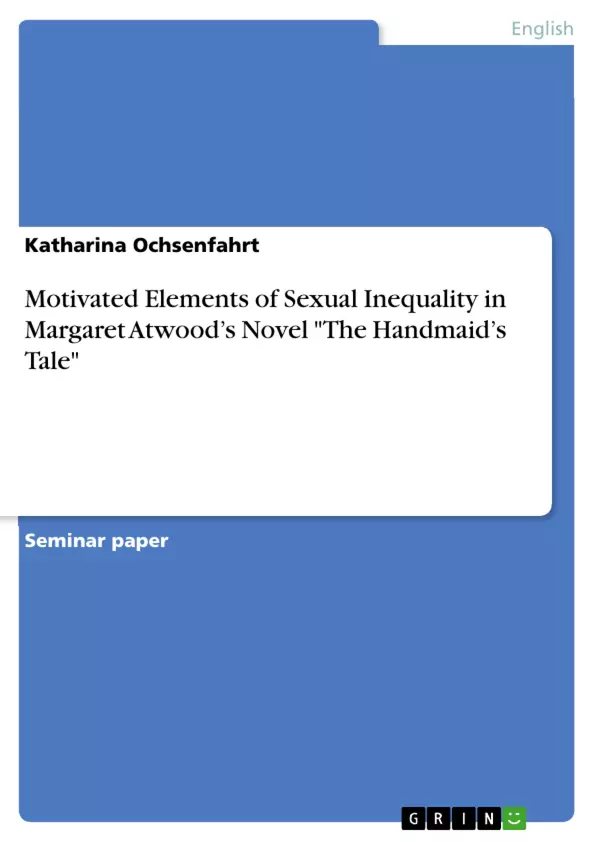"…women represent fifty percent of the adult world population, one third of the official labour force, perform nearly two-thirds of all working hours, receive only one-tenth of world income and own less than one percent of world property."
This quotation from an United Nations report has been in the manuscript of The Handmaid’s Tale as possible epigraph, before Margaret Atwood decided to discard it. But nevertheless it shows very distincly that sexual unequality is still an important subject for discussion and literary works. In particular Margaret Atwood, who is also active in Amnesty International , paints a horrible, brutal and extremistic world in her dystopian novel The Handmaid’s Tale. In her essay “Writing Utopia” Margaret Atwood emphasizes that in this novel nothing happens that has not occurred somewhere in the world at some time before or even now. Which elements of sexual unequality in Offred’s life are motivated by real societies? Why did Margaret Atwood pick these for her novel The Handmaid’s Tale? This will be pointed out in the following analysis by comparing the real world with the fictive world of Gilead for similarities of sexual unequality during the rapid reversal of the state and in points of the politics, the ideology, the society, the daily life and the resistance against the state.
Inhaltsverzeichnis (Table of Contents)
- Introduction
- Motivated Elements of Sexual Unequality in Offred's Life
- Rapid Reversal
- Politics
- Ideology
- Society and Daily Life
- Resistance
- Conclusion
- Bibliography
Zielsetzung und Themenschwerpunkte (Objectives and Key Themes)
This analysis aims to examine the motivated elements of sexual inequality in Margaret Atwood's novel *The Handmaid's Tale*. It seeks to understand how these elements are rooted in real-world societies and why Atwood chose to depict them in her dystopian narrative. The analysis focuses on comparing the fictive world of Gilead with real-world examples of sexual inequality.
- Rapid reversal of power dynamics and the impact on women's autonomy
- The role of politics and ideology in shaping societal norms and practices regarding gender roles
- The impact of societal norms and daily life on women's experiences under Gilead's regime
- The forms of resistance against oppressive systems of sexual inequality
Zusammenfassung der Kapitel (Chapter Summaries)
The analysis begins with an introduction that provides background information on the prevalence of sexual inequality in the real world. The introduction also introduces the novel *The Handmaid's Tale* and highlights its relevance in exploring these issues.
The following chapter examines the rapid reversal of power dynamics in Gilead, exploring how this change impacted women's lives. It delves into the specific experiences of Offred, the protagonist, as she navigates this shift and its consequences.
The chapter on politics delves into the theocratic regime of Gilead and its impact on women's rights and freedoms. It draws comparisons with real-world examples of totalitarian governments and theocratic states.
Schlüsselwörter (Keywords)
The analysis focuses on key themes and concepts surrounding sexual inequality, including the rapid reversal of power dynamics, theocratic regimes, totalitarian government, women's rights and freedoms, resistance, and dystopian literature.
- Quote paper
- Katharina Ochsenfahrt (Author), 2008, Motivated Elements of Sexual Inequality in Margaret Atwood’s Novel "The Handmaid’s Tale", Munich, GRIN Verlag, https://www.grin.com/document/150837



